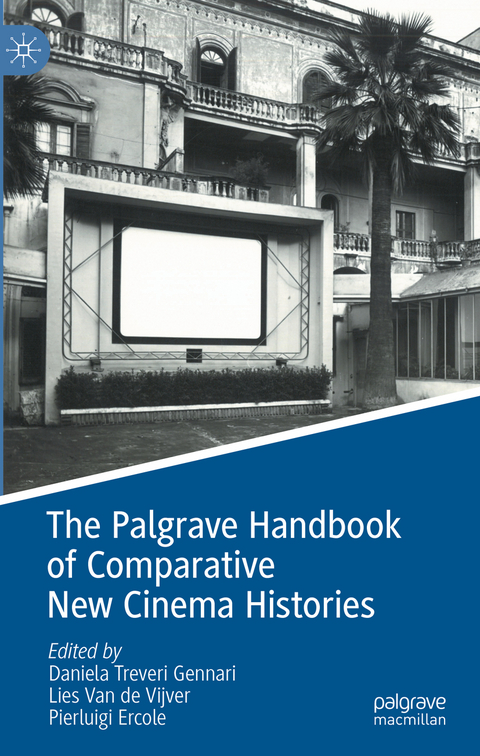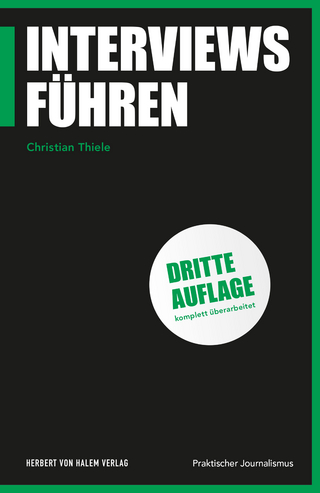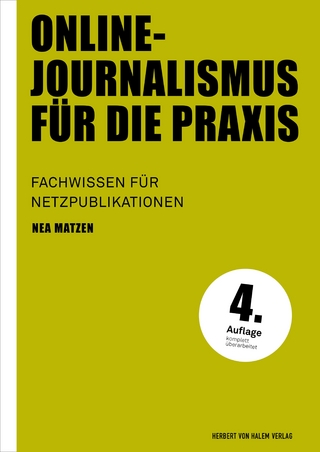
The Palgrave Handbook of Comparative New Cinema Histories
Springer International Publishing (Verlag)
978-3-031-38788-3 (ISBN)
Chapter(s) "Chapter 8." is available open access under a Creative Commons Attribution 4.0 International License via link.springer.com.
lt;p>Daniela Treveri Gennari is Professor of Cinema Studies at Oxford Brookes University, UK. She is the Principal Investigator of the AHRC-funded project European Cinema Audiences. Entangled Histories, Shared Memories. Her publications include, among others, the edited volume Rural Cinema Exhibition and Audiences in a Global Context (Palgrave, 2018).
Lies Van de Vijver is Co-Investigator and project manager of European Cinema Audiences. She edited Mapping Movie Magazines: Digitization, Periodicals and Cinema History with Daniel Biltereyst, runner-Up for BAFTSS Best Edited Collection 2021.Pierluigi Ercole is Associate Professor of Film Studies at De Montfort University, UK. He is Co-Investigator for the AHRC-funded project European Cinema Audiences. Entangled Histories, Shared Memories.
1. Comparing New Cinema Histories: An introduction. Daniela Treveri Gennari, Lies Van de Vijver & Pierluigi Ercole.- Part I. Local Encounters.- Introduction. Daniela Treveri Gennari, Lies Van de Vijver & Pierluigi Ercole.- 2. Comparing localised film culture in English cities: the diversity of film exhibition in Bristol and Liverpool. Peter Merrington, Matthew Hanchard, Bridgette Wessels.- 3. Cinema-going in Turkey between 1960 and 1980: Cinema memories, film culture and modernity. Hasan Akbulut.- 4. "A United Stand and a Concerted Effort:" Black cinema-going in Harlem and Jacksonville during the silent era. David Morton & Agata Frymus.- 5. Exhibition of national and foreign films in six Mexican cities during the Golden Age of Mexican cinema: The year of 1952. José Carlos Lozano, Blanca Chong, Efraín Delgado, Jaime Miguel González, Jorge Nieto Malpica and Brenda Muñoz.- 6. Comparing aspects of regional and local cinema differentiation through perceptions of cinema-going in post-socialist Bulgaria. Maya Nedyalkova.- 7. A comparative analysis of the Polish film market from the first years of independence to 1930. Karina Pryt.- 8. Managing constraints and stories of freedom: Comparing cinema memories from the 1950s and 60s in Sweden. Åsa Jernudd & Jono Van Belle.- 9. Film consumption and censorship pre and post Covid-19 global pandemic: A comparison on undergraduate perspective in The Bahamas. Monique Toppin.- Part II. European encounters.- Introduction. Daniela Treveri Gennari, Lies Van de Vijver & Pierluigi Ercole.- 10. "Our job is to pull audience to Soviet films with all means necessary". State-monopolised film distribution and patterns of film exhibition in two Eastern Bloc cities in the Stalinist period: a comparative case study of Cracow (Poland) and Magdeburg (East Germany). Kathleen Lotze & Konrad Klejsa.- 11. Cinephiles without films: Culture, censorship and alternative forms of film consumption in Spain and the GDR around 1960. Fernando Ramos Arenas.- 12. Discovering cinema typologies in urban cinema cultures: comparing programming strategies in Antwerp and Amsterdam, 1952-1972. Julia Noordegraaf, Thunnis van Oort, Kathleen Lotze, Daniel Biltereyst, Philippe Meers & Ivan Kisjes.- 13. Ticket whistles and football scores: Auditory ecology, memory and the cinema experience in 1950s Gothenburg and Bari. Kim Khavar Fahlstedt & Daniela Treveri Gennari.- 14. Measuring and interpreting film preferences in autocratic states. Joseph Garncarz.- 15. Cinema-going in German-occupied territory in the Second World War. The impact of film market regulations on supply and demand in Brno, Brussels, Krakow and The Hague. Clara Pafort-Overduin, Andrzej Debski, Terezia Porubcanska, Karina Pryt, Pavel Skopal, Thunnis Van Oort, Roel Vande Winkel.- Part III. Global encounters.- Introduction. Daniela Treveri Gennari, Lies Van de Vijver & Pierluigi Ercole.- 16. Cinema-going in the South Asian diaspora: Indian films, entrepreneurs, and audiences in Trinidad and Durban, South Africa. James Burns.- 17. Cinema intermediaries, communities and audiences (Soviet Siberia, post-Ottoman Greek Thessaloniki, Colonial Maghreb). Morgan Corriou, Caroline Damiens, Mélisande Leventopoulos, Nefeli Liontou.- 18. German films in Latin America and the Second World War. A comparative study on Argentina and Ecuador. Marina Moguillansky & Yazmín Echeverría.- 19. Towards a global and decentralised history of film cultures. Networks of exchange among Ibero-American film clubs (1924-1958) as a case study. Ainamar Clariana & Diana Roig Sanz.- 20. Intercultural transfers in cinema dynamics. A global and digital approach to early writings on cinema through the Uruguayan periodicals archive. Pablo Suárez-Mansilla and Ventsislav Ikoff.- 21. Transnational cinema memory: Latin American womenremembering cinema-going across borders. Dalila Missero.
| Erscheinungsdatum | 24.01.2024 |
|---|---|
| Zusatzinfo | XXVIII, 482 p. 46 illus., 7 illus. in color. |
| Verlagsort | Cham |
| Sprache | englisch |
| Maße | 155 x 235 mm |
| Gewicht | 925 g |
| Themenwelt | Kunst / Musik / Theater |
| Sozialwissenschaften ► Kommunikation / Medien ► Journalistik | |
| Schlagworte | Audience Studies • Cinema-going practices • Cinema memories • Economic film history • Film consumption • Film distribution networks • film programming • New Cinema History |
| ISBN-10 | 3-031-38788-0 / 3031387880 |
| ISBN-13 | 978-3-031-38788-3 / 9783031387883 |
| Zustand | Neuware |
| Informationen gemäß Produktsicherheitsverordnung (GPSR) | |
| Haben Sie eine Frage zum Produkt? |
aus dem Bereich


